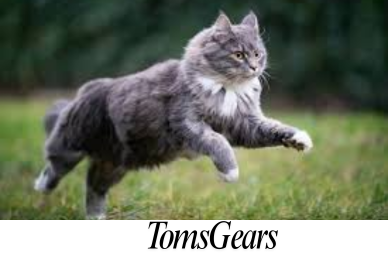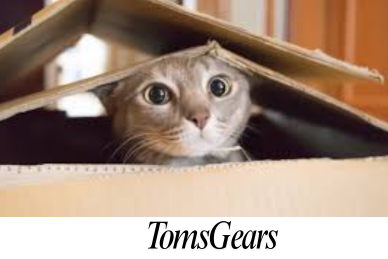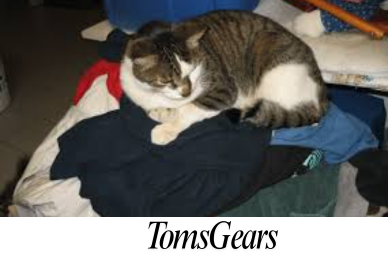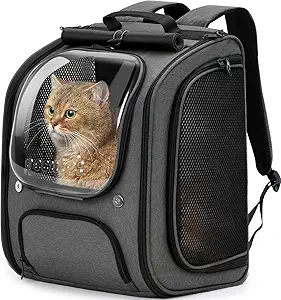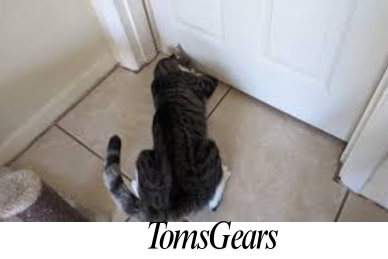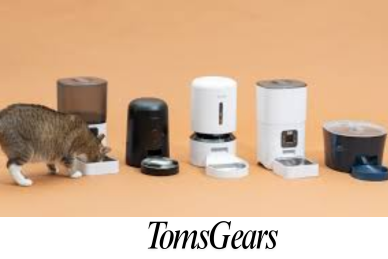How to Train Your Cat to Use an Automatic Feeder?
Automatic feeders can revolutionize your cat’s mealtime routine by offering convenience for busy pet parents and consistent portion control for feline health. However, the key to success lies in proper training. This article will walk you through the process of acclimating your cat to an automatic feeder, ensuring a smooth transition and happy mealtimes for years to come.
Benefits of Automatic Feeders
Before diving into training, it’s important to understand why automatic feeders are worth the effort. These devices offer unparalleled convenience for pet owners with busy schedules or those who travel frequently. They excel at portion control, helping maintain a healthy weight for your feline friend by dispensing precise amounts of food.
For cats who thrive on routine, especially those with medical conditions like diabetes, automatic feeders provide a consistent schedule that can be a real lifesaver. As an added bonus, you’ll likely experience reduced stress as those early morning wake-up calls from a hungry cat become a thing of the past.
How to Choose the Right Automatic Feeder
Selecting the appropriate feeder is crucial for success. When shopping for an automatic feeder, consider its capacity to ensure it can hold enough food for your planned feeding schedule.
Look for models with programmable features that allow you to customize feeding times and portions. Reliability is paramount – a feeder that malfunctions and misses meals defeats its purpose. Ease of cleaning is another important factor to maintain hygiene and prevent food contamination.
Lastly, pay attention to the noise level, as quieter feeders are less likely to startle your cat during operation.

For most cats, an electronic programmable feeder with multiple daily feeding options works well. If you have multiple cats in your household, you might want to consider microchip-activated feeders to prevent food theft and ensure each cat gets their proper portion.
How to Prepare for Transitioning Your Cat to an Automatic Feeder
Before introducing the feeder, take some time to assess your cat’s current eating habits. Observe whether they prefer to graze throughout the day or eat set meals. This information will be invaluable when it comes to programming the feeder effectively.
Next, you’ll need to choose an ideal location for the feeder. Look for a quiet spot away from high-traffic areas, but not too far from where your cat usually eats. It’s crucial to ensure the surface is stable and the feeder won’t tip over if your cat gets playful or decides to investigate it more thoroughly.
Training Your Cat to Use Automatic Feeder: Desensitization Method
Now that you’re ready to begin the training, start with a visual introduction. Place the unplugged feeder in the chosen location and allow your cat to investigate at their own pace. Resist the urge to force interaction – your cat’s natural curiosity will take over a given time.
Once your cat seems comfortable with the feeder’s presence, it’s time to introduce the sound. Plug in the feeder and manually trigger it to dispense a small amount of food while your cat is in the room, but not fixated on the feeder. Immediately offer a treat or praise to create a positive association. Repeat this process several times a day for a few days to reinforce the connection.
To further create positive associations, engage in short play sessions near the feeder using your cat’s favorite toys. This creates a fun, positive atmosphere around the new object, making it more appealing to your feline friend.
Training Your Cat to Use Automatic Feeder: Positive Reinforcement Method
As your cat becomes more comfortable with the feeder’s presence, it’s time to encourage interaction. Whenever your cat approaches or touches the feeder, offer praise or a small treat. This reinforces the idea that the feeder is a positive thing and encourages further exploration.
Start by hand-feeding your cat from the feeder’s bowl to familiarize them with eating from this new location. Gradually progress to manually triggering the feeder to dispense food while your cat watches. As they become more comfortable, slowly increase the distance between your cat and the feeder when you trigger it. This helps them associate the dispensing sound with the arrival of food, even when they’re not right next to the feeder.
Transitioning to Automatic Feeding
Now that your cat is comfortable with the feeder’s presence and operation, it’s time to let the device do its job. Begin by programming the feeder to dispense small portions initially. This approach minimizes waste if your cat is still hesitant about eating from the feeder.
Over the course of several days, gradually increase the portion size to match your cat’s normal meal amount. As you do this, start to reduce the amount of food you offer by hand. The goal is to phase out manual feeding entirely as your cat becomes more reliant on and comfortable with the automatic feeder.
Remember, patience is key throughout this process. Some cats may adapt quickly to the new feeding method, while others might take weeks to fully adjust. Consistency in your approach will yield the best results, so stick with the training even if progress seems slow at first.
Troubleshooting Common Issues
Even with careful training, you may encounter some challenges along the way. If your cat shows fear of the feeder, try placing treats on top of the device to encourage positive interaction. For picky eaters, experiment with different kibble shapes or sprinkle some of their favorite treats on the dispensed food to make it more enticing.
In households with multiple cats, using separate feeders or considering microchip-activated models can help ensure each cat gets their proper portion without competition or stress. For cats exclusively on wet food, look for feeders with built-in ice pack compartments to keep food fresh. Some advanced models even allow you to record a voice message to call your cat at mealtime, adding a personal touch to the automated process.
Maintaining Your Automatic Feeding Routine
Once your cat is comfortable with the feeder, it’s important to maintain the success of your new feeding system. Stick to a consistent schedule to reinforce the routine your cat has learned. Regular cleaning of the feeder is essential to prevent bacterial growth and ensure your cat’s food remains fresh and appealing.
Make it a habit to check the feeder daily to ensure it’s functioning correctly. This quick inspection can prevent missed meals due to technical issues. Additionally, keep an eye on your cat’s weight and adjust portions if needed. The precise portion control offered by automatic feeders can be a great tool for weight management, but it’s still important to monitor your cat’s overall health and adjust as necessary.
Final Words
Training your cat to use an automatic feeder requires patience and consistency, but the rewards are well worth the effort. You’ll gain peace of mind knowing your cat is fed on schedule, and your cat will enjoy the routine and independence of their new feeding system.
Remember, every cat is unique, and what works for one may not work for another. If you encounter persistent difficulties during the training process, don’t hesitate to consult your veterinarian or a professional animal behaviorist for personalized advice.

